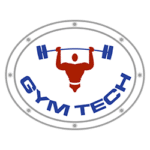Busting Gym Flooring Myths: The Truths You Need to Know for Your Space
Selecting the ideal gym flooring is a crucial juncture in crafting spaces conducive to fitness, safety, and visual harmony. However, navigating this choice can often be hampered by persistent myths and misconceptions that swirl around gym flooring options. Randy King, a seasoned veteran in the realm of gym equipment flooring sales and installation, steps forth to dismantle these myths, armed with years of frontline experience. His mission is clear: to dispel the fog of falsehoods and illuminate the truth for gym owners and fitness aficionados alike.
Shifting to first-person, allow me to guide you through the misconceptions:
Myth 1: One Type of Flooring Fits All
The belief that one flooring solution can universally fit every segment of a gym is a myth that needs addressing. The reality is that different zones, be it the weight room, cardio area, or yoga studio, necessitate unique flooring solutions, each tailored to the specific activities hosted within. “Adopting a one-size-fits-all mindset overlooks the nuanced requirements of each space, potentially compromising on safety, performance, and overall durability,” I consistently emphasize to my clients (Why Professional Gym Flooring Installation Makes a Difference).
Myth 2: The Cheaper, The Better
It’s understandable to gravitate towards cost-saving options when outfitting your gym. However, the cheapest choices often escalate into greater expenditure over time due to increased wear and the subsequent need for repairs or replacements. “True value in gym flooring lies in its long-term durability and minimal maintenance demands, characteristics that ultimately foster a superior user experience,” is advice I find myself giving time and again (How the Right Gym Flooring Can Skyrocket Your Safety Standards).
Myth 3: Rubber Flooring is Only for Industrial Uses
Rubber flooring’s association with industrial settings is a misconception that discounts its versatility. Far from being relegated to commercial gyms alone, “Rubber flooring presents an optimal choice for home gyms, delivering industrial-grade durability and shock absorption in a range of finishes and colors that defy its once-monolithic aesthetic reputation,” I often clarify. It’s a testament to how modern manufacturing has evolved to merge functionality with residential visual appeal.
Myth 4: Maintenance is a Hassle
The notion that maintaining gym flooring is an onerous task couldn’t be further from the truth. Modern flooring technologies have simplified maintenance routines significantly. “With most quality gym flooring, a regular sweep and the occasional mop are all that’s required to preserve both its appearance and functionality,” is a reality I aim to communicate, advocating for materials that promise ease without sacrificing performance.
Myth 5: Installation Can Easily Be a DIY Project
The allure of DIY projects is undeniable, but when it comes to gym flooring, professionalism in installation is paramount. The risks of improper installation—buckling, gaps, unevenness—can adversely impact both safety and flooring longevity. “Viewing expert installation as an investment rather than an expense provides a foundation of assurance for the gym’s future,” I assert, fostering a perspective that prioritizes enduring quality (Crafting Custom Gym Floors for the Ultimate Fitness Experience).
Conclusion
Demystifying gym flooring myths is a crucial step toward making enlightened choices for your fitness space, balancing concerns of budget, functionality, and aesthetics. Equipped with insights gleaned from years within the industry, my mission is to steer gym owners towards flooring solutions that encapsulate an ideal mix of performance, safety, and visual appeal. For those navigating these decisions, Gym Tech Fitness Flooring Solutions is your ally, ready to aid in the creation of spaces that elevate the fitness experience to new heights.

